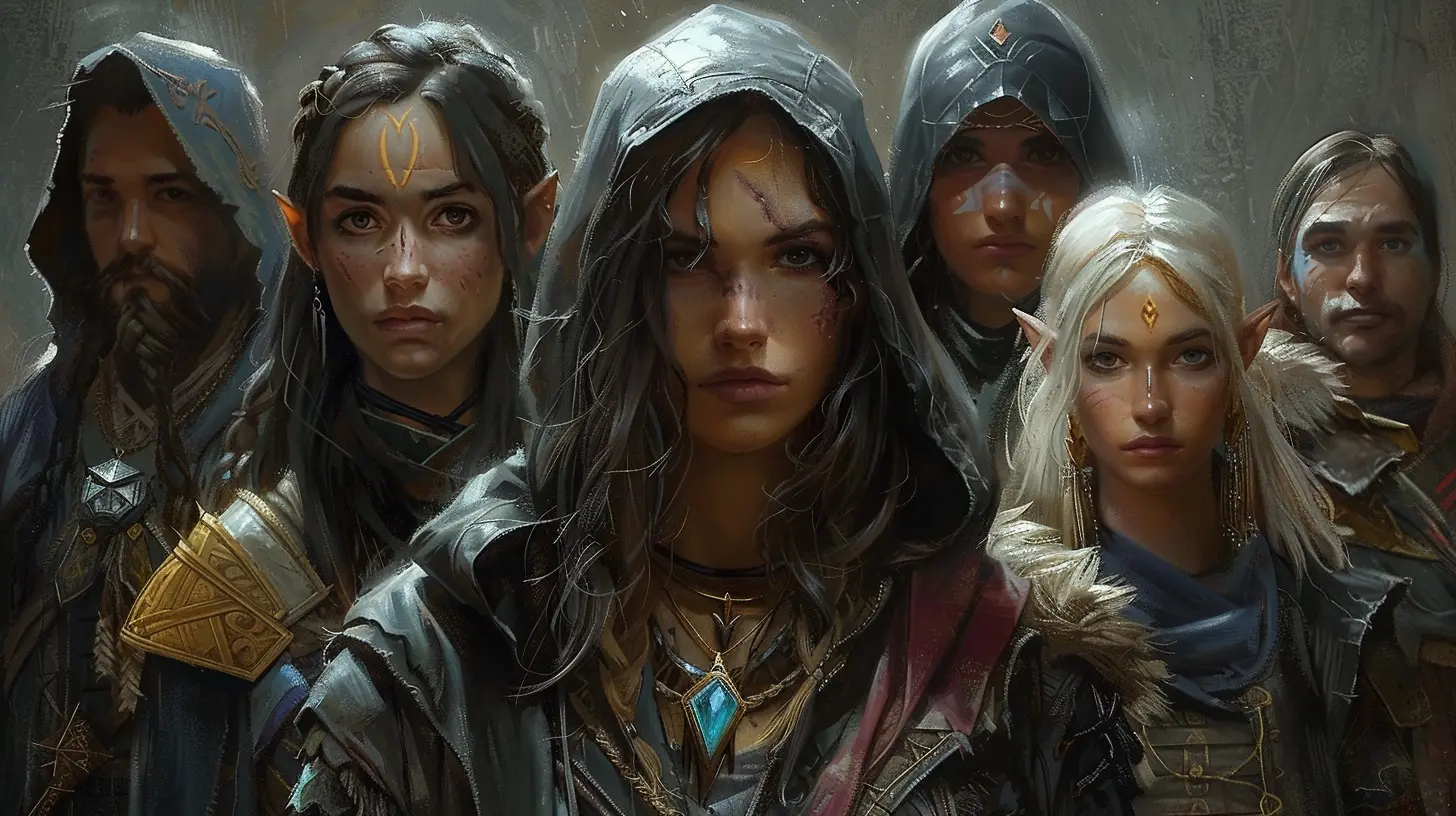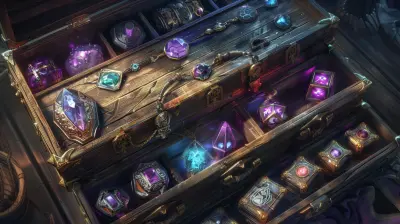How to Build Emotionally Driven Narratives in RPGs
23 June 2025
Alright, folks, let’s get one thing straight—an RPG without an emotional hook is like a pizza without cheese. Sure, you’ve got a crust (the mechanics), toppings (the gameplay), and maybe even some sauce (the graphics), but without that gooey, emotional layer binding everything together? It’s just not as satisfying. So today, we’re diving headfirst into the art of building emotionally driven narratives in RPGs. Grab your dice, equip your +2 Pen of Storytelling, and buckle up—it’s about to get real (and maybe even a little tear-jerky).

Why Emotional Narratives Are the Secret Sauce
Ever notice how you vividly remember the time your party had to decide whether to save the villagers or abandon them to chase the Big Bad Evil Guy, but you can barely recall which dungeon had the most loot? That’s because emotions stick with us. When a story makes us laugh, cry, or even scream in frustration, it carves a little spot in our brain, claiming squatters' rights.Here’s the deal: RPGs aren’t just about numbers and stats—they’re about stories. And great stories are like that one friend who always knows how to get under your skin in just the right way. They challenge you, connect with you, and make you feel something, whether it’s triumph, heartbreak, or just a sense of "Holy crap, did that just happen?!"

The Ingredients of an Emotionally Driven Narrative
So how do you turn an RPG campaign or game into a heartfelt rollercoaster? Let’s break it down like a recipe for grandma’s secret dungeon casserole.1. Start with Relatable Characters
Relatable characters are the heart of any emotionally driven RPG. Players don’t care about walking, talking stat sheets. They care about people (even if those people are half-orc bards with questionable fashion choices).- Give Characters Depth: Think beyond the “edgy rogue with a tragic backstory” cliché. Sure, tragic backstories are great, but what about their quirks? Their dreams? Their love of artisanal cheese?
- Flaws Make Them Real: Perfect characters are boring. It’s the flaws, the messy stuff, that make them interesting. Maybe your paladin has a crippling fear of public speaking. Or your mage is addicted to snacks mid-battle.
When players can see themselves—or someone they wish they could punch—in your characters, they’ll get emotionally hooked faster than you can say, “Roll for initiative.”
2. Create Stakes That Matter
If the world is constantly on the brink of destruction, it stops feeling urgent after the fifth time. Instead, focus on stakes that hit closer to home. People care way more about saving their trusty NPC companion or the town blacksmith’s daughter than yet another anonymous kingdom.- Personal Stakes: Tie the stakes directly to the characters. Is the villain threatening someone they love? Is their hometown in danger?
- Moral Gray Areas: Give players choices where there are no easy answers. Want to save the villagers? Cool. But it means you’ll lose precious time to stop the villain’s plans. Choices like these make outcomes feel personal.
And remember, not every stake needs to be life-or-death. Sometimes, the most gut-wrenching moments are the quiet ones. Like watching an NPC sacrifice themselves to save the group or losing a treasured weapon in a desperate fight.
3. Write Dialogue That Feels Human
Nothing yanks players out of an emotional story faster than dialogue that sounds like a bad text-to-speech generator. Your NPCs shouldn’t talk like robots reciting exposition—they should sound like real people with their own thoughts, feelings, and slang.- Inject Personality: Maybe the grizzled veteran always starts with, “Back in my day…” or the nervous mage stammers during every conversation. Give your NPCs distinct voices!
- Don’t Overdo the Monologues: Yeah, dramatic speeches are cool, but save them for big moments. Otherwise, keep it snappy and natural.
If you want players to cry over an NPC’s death, first make them love that NPC with relatable, heartfelt dialogue. You can’t drop a bucket of tragedy on someone they barely know and expect waterworks. That’s not how tears work, my dude.
4. Use Music and Atmosphere as Emotional Weapons
Music is like a cheat code for emotions. Think about it—ever watch a sad movie scene in silence? It doesn’t hit the same, does it? The same goes for RPGs.- Emotional Soundtracks: Use music that fits the mood. Slow, haunting piano tracks for quiet moments. Thrumming drums for tense battles.
- Visuals and Setting: A crumbling, storm-ravaged castle hits different than a sunny meadow. Combine the environment with the score to set the emotional stage.
Want players to feel awe? Drop them into a massive cave filled with glowing crystals and an ethereal choir in the background. Want dread? Dark corridors, dripping water, and faint footsteps. Boom. Instant feels.
5. Let Players Influence the Narrative
Here’s the thing: Nothing pulls someone into a story more than feeling like they’ve got skin in the game. Your players aren’t just along for the ride; they’re driving the emotional bus (hopefully not off a cliff).- Branching Paths: Give them choices that genuinely affect the narrative. If they save the villagers, maybe the town becomes an ally later. If they don’t, the villain gains reinforcements.
- Player-Driven Moments: Let players create their own emotional beats. Maybe they write a heartfelt letter to their family or make a sacrifice to protect the group.
When players feel like they’ve shaped the story, they’ll become way more invested in the outcomes—and their emotions will follow suit.
6. Kill Your Darlings. Literally.
Alright, let’s get controversial: Don’t be afraid to kill characters. Let’s be real—loss is a powerful emotion. If done right, it can turn a good story into an unforgettable one. But—and this is a big but—don’t overdo it.- Earn the Deaths: Randomly killing off characters to shock players is lazy. Build up to it. Make their deaths mean something.
- Give Closure: Don’t leave players hanging. Let them mourn, build a memorial, or have a moment of reflection.
A well-timed, well-executed character death can hit harder than a crit from a level 20 barbarian.

Mistakes to Avoid
Let’s pump the brakes for a second and talk about what not to do.- Overloading the Emotions: Constant drama gets exhausting. You need lighter moments to give players a breather. Nobody wants to ugly cry every session.
- Forcing Emotions: If you have to tell your players, “This is sad,” you’re doing it wrong. Show them instead. Let emotions happen naturally.
- Ignoring Player Agency: If the story feels railroaded, players won’t care. Let them steer the ship. You’re the guide, not the dictator.

Wrapping It Up
At the end of the day, emotionally driven narratives in RPGs are all about connection. It’s about making players laugh, cry, and maybe even throw a pillow across the room. By focusing on relatable characters, meaningful stakes, natural dialogue, and player agency, you can create a story that sticks with people long after the final boss is defeated.So, go ahead—make those players feel all the feels. Just don’t forget to pass the tissues when things get a little too real.
all images in this post were generated using AI tools
Category:
Role Playing GamesAuthor:

Madeleine McCaffrey
Discussion
rate this article
2 comments
Velma McCullough
Building emotionally driven narratives in RPGs enhances player engagement and immersion. Focus on character development, meaningful choices, and relatable themes to create a memorable and impactful gaming experience.
September 6, 2025 at 3:08 AM

Madeleine McCaffrey
Thank you for your insightful comment! I completely agree—character development and meaningful choices are key to creating immersive and memorable narratives in RPGs.
Devin Miller
This article highlights the crucial role of emotional depth in RPG narratives. By prioritizing character development and player choices, developers can create immersive experiences that resonate personally. Effective storytelling not only engages players but also fosters lasting emotional connections to the game.
June 25, 2025 at 4:58 PM

Madeleine McCaffrey
Thank you for your insightful comment! I completely agree—emotional depth and character development are essential for creating immersive RPG experiences that truly resonate with players.


